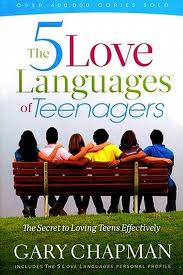 Writing about a Mother’s Day fundraiser in February – what’s the deal with that? A couple of reasons:
Writing about a Mother’s Day fundraiser in February – what’s the deal with that? A couple of reasons:
- I’ve learned my lesson from the Valentine’s Day fundraiser that you shouldn’t wait until the day before to suggest the fundraiser as – unsurprisingly – it doesn’t give other youth workers much time to organize it
- Mother’s Day is different depending on what country you live in. In 100 countries worldwide (yep, I just counted the number on Wikipedia) Mother’s Day is in May, but there are about 50 other countries that celebrate Mother’s Day at other times of the year
One of these other countries is the UK where I’m from originally, so I have to be more on the ball with this, as living in America means I don’t get any prompts until late April nowadays – a little late in the day for my Mum in the UK.
Anyways, the Mother’s Day fundraiser. Mother’s Day should be a special day for our Mums/Moms, so the Mother’s Day fundraiser gives youth an opportunity to both surprise and treat her. Do this be organizing a special afternoon tea for mothers that doubles as a fundraiser.
Afternoon Tea
The Mother’s Day fundraiser should be held on the Sunday afternoon of Mother’s Day and Moms should be served whatever constitutes fancy where you live. In the UK, this would probably be tea served on a proper china set if someone has one available to you, along with something like scones, jam and clotted cream. In the US………..good question. Being a guy from the UK, I’m not really best qualified to advise what’s fancy – please let me know in the comments below any thoughts you have!
To make this even more special, have your youth be the servers. Get them to dress up smartly and bring in someone to teach them some basic lessons of being a server. Moms will get a kick out of having their children serve them this way, especially seeing their son/daughter all dressed up.
Also consider having flowers on hand to be given to mothers. In the UK, daffodils are the traditional Mother’s Day flower, but I’m sure most Moms would appreciate any kind of flowers.
The Mother’s Day fundraiser doesn’t have to be restricted to mothers with children in your youth group – make it available to all mothers, grandmothers, etc, provided you have enough space to do so. So long as it doesn’t cost too much, produce some well designed invitations/tickets to be given to attendees.
Fundraising
To make this into a Mother’s Day fundraiser, sell tickets for mothers to be able to attend. This will be needed to cover the cost of the tea, food, flowers, etc, so price it appropriately so that your youth group raises money on top of that.
Encourage your youth to buy a ticket for their Mom as their gift to her for Mother’s Day (or get them to hit up the Bank of Dad). Put together some flyers or invitations to be handed out with details of when, where and how much the Mother’s Day fundraiser will be. Give these to your youth to hand out as widely as possible (so long as you can accommodate many people).
If your youth group is run through a church, a church service is an ideal opportunity to promote the Mother’s Day fundraiser and make sure as many people as possible know about it.
Be sensitive
Mother’s Day can be an emotional time of year for people whose Moms have died or left them, so be aware of this if any of the youth in your group are in this position. Don’t exclude them from the Mother’s Day fundraiser by any means, but be sensitive to their feelings and don’t pressure them into helping if they’re not keen.
I hope this has given you some good ideas for a Mother’s Day fundraiser – we have many other youth group fundraiser ideas, so check them out if you ever need any inspiration.
Question: What would you serve at a Mother’s Day fundraiser? Let us know in the comments below.
You can also connect with us by:
- Signing up to receive our posts via email
- Following us on Twitter
- Liking us on Facebook
- Signing up to our RSS feed




 Now that you’ve sat down and worked out the
Now that you’ve sat down and worked out the